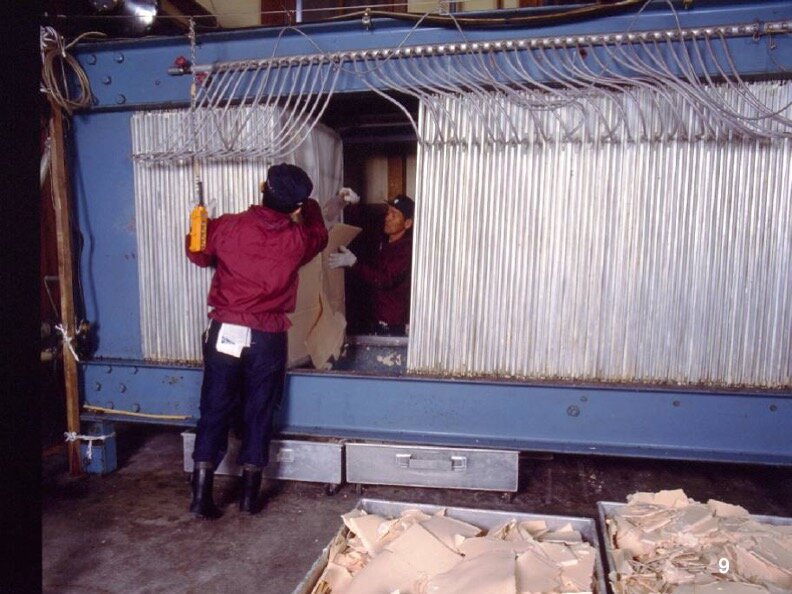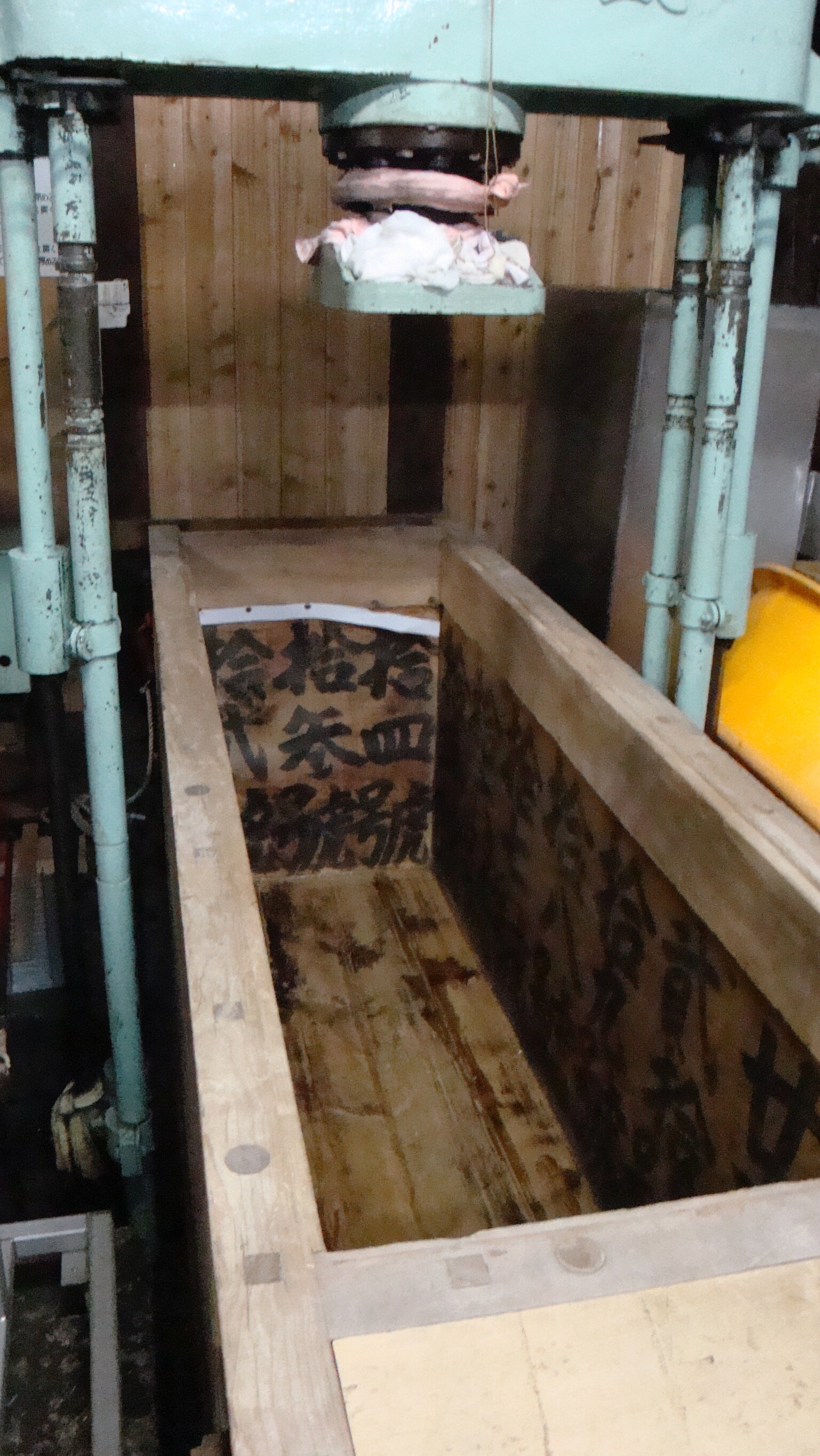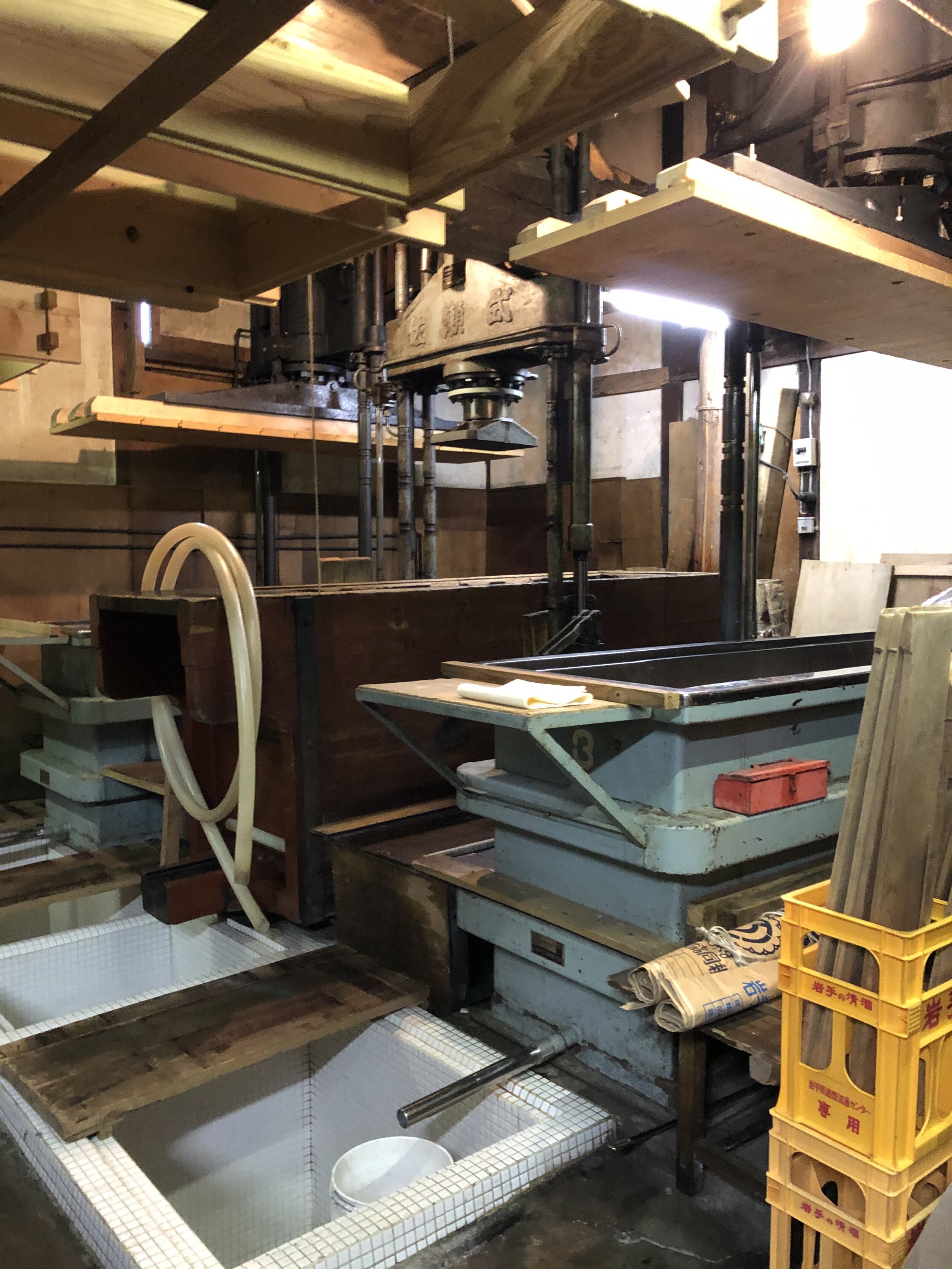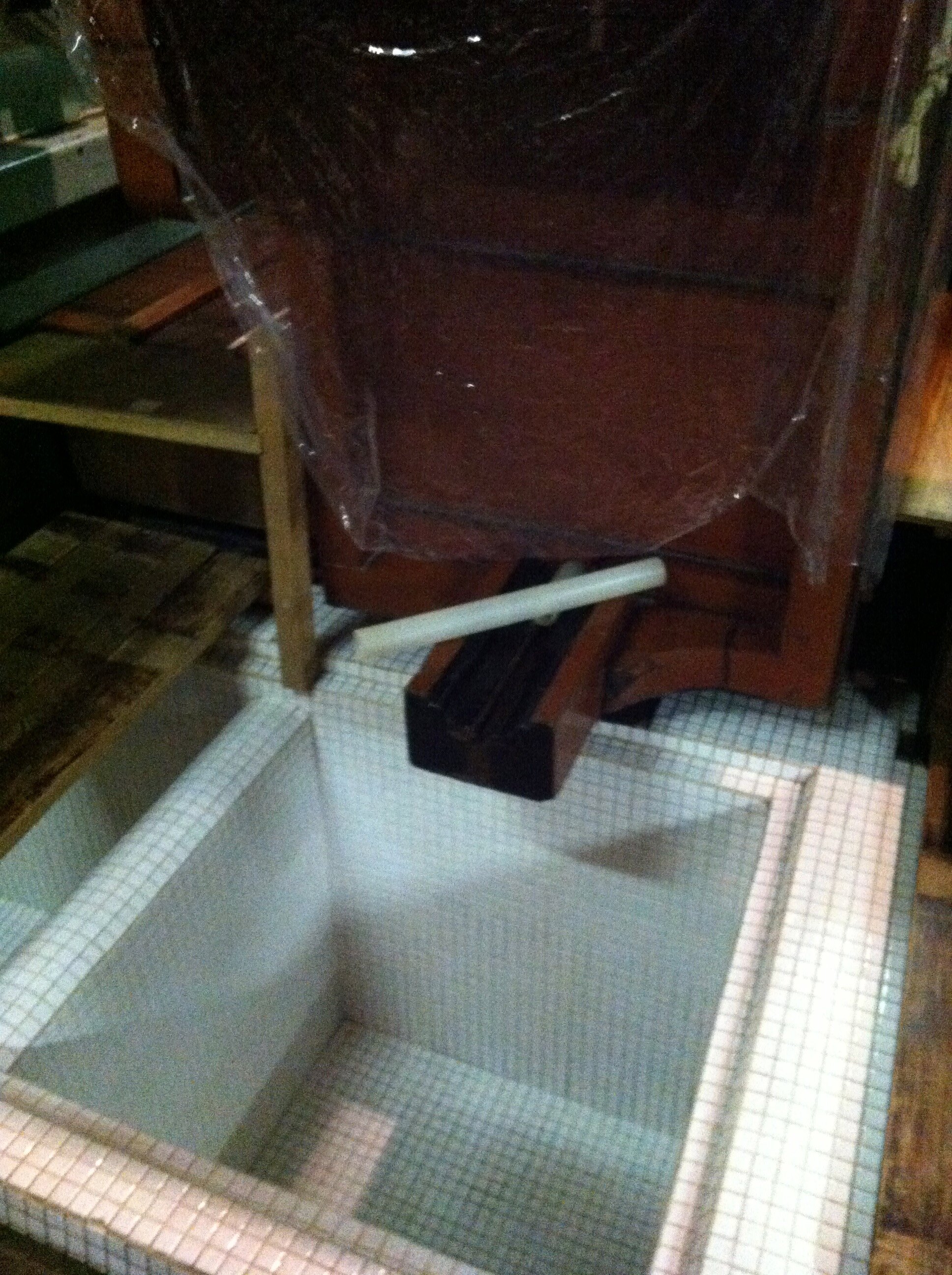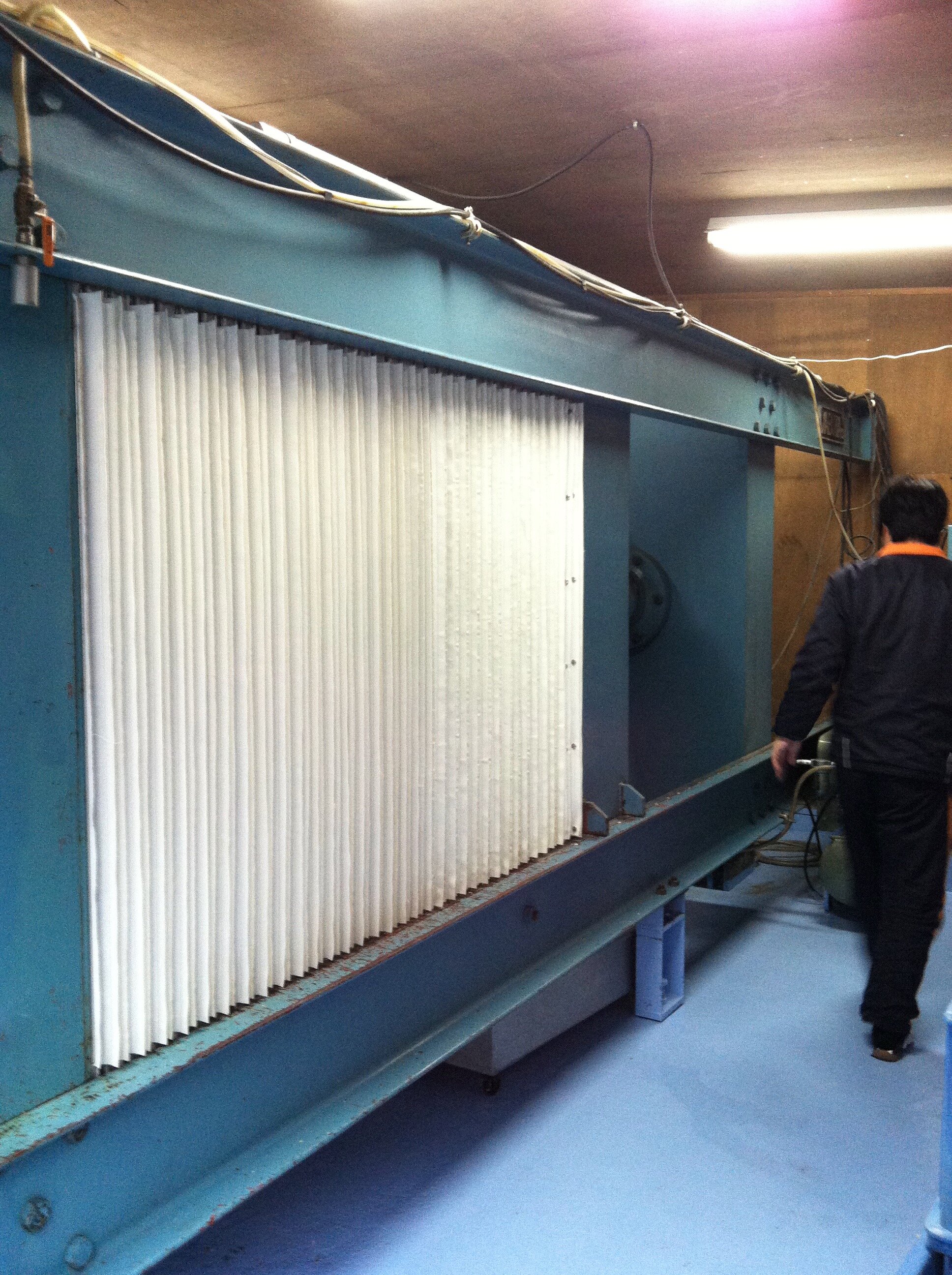
Sake Production
Step 8. Pressing

Pressing / Jozo
There are a variety of methods employed to separate residual rice solids from newly brewed sake. Technically referred to as “pressing or squeezing”, not filtration, this post-fermentation step clarifies and refines the sake by removing most of the undissolved particles.
Hydraulic Press (Assaku-ki) Good Quality
This modern pressing system, best known by the brand name “Yabuta”, pumps fresh moromi between a series of sealed fabric covered frames which act like inflatable reservoirs. After the press is completely filled compressed air inflates the individual panels and the liquid is forced through the finely woven fabric leaving the rice solids (kasu) behind. This system’s primary advantage is economic; it’s fast, efficient, may be scaled-up to handle high volumes and when operated properly, yields sake of good clarity without loss of flavors.
Fune Press Better Quality
A traditional and more gentle press, Fune are heavily-built long wooden boxes (modern fune may be steel ) used to apply downward pressure on moromi-filled cotton or nylon bags. The bags (saka-bukuro) are filled, folded and laid side by side in tight rows stacked several layers high; a good-sized Fune may hold 40 – 60 bags, 6 – 10L each.
Fune Press Grades
Abashiri
The weight of the bags squeeze the sake through the fabric. This initial free-run sake is young, lively and brash. It is typically set aside for Fall Release.
Nakadori
The first and the most delicate pressing. It is considered the best, yielding sake of superior color, aroma and flavor. Generally reserved for special bottlings.
Seme
The final and hardest pressing squeezes out as much liquid as possible. The kasu will be very dry. This is of lower quality and is often blended with less expensive sake.
Shizuku Very Best Quality
One drop at a time. Shizuku drip pressing is the most expensive process in terms of time and labor. It is reserved for Daiginjo grade and other high-end limited-production sake. These are the sake which most benefit from a slow gentle separation of solids from liquid…no direct pressing. Finely-woven cotton bags are suspended over a collection tank, filled with moromi, then allowed to drip until dry. The process may take several days to complete but preserves the most fragile aromas and flavors.
